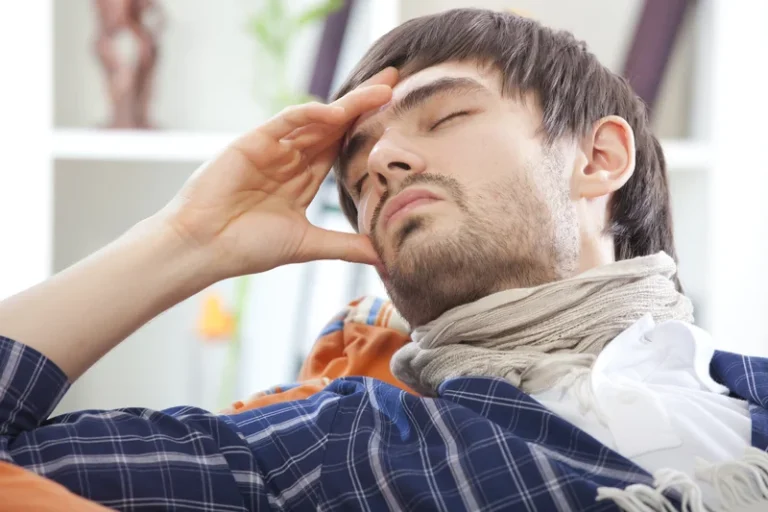
This symptom is temporary, generally not lasting more than a few days. While medical detox is the gold standard for alcohol detox, not all people addicted to alcohol can, or may necessarily need to, enter a detox facility for 24-hour care. Inpatient alcohol detox, also known as medical detox, involves entering a detox facility for three to five days on average. Although you might be tempted to tough out withdrawal symptoms by yourself, it’s not worth the risk. We believe everyone deserves access to accurate, unbiased information about mental health and addiction. That’s why we have a comprehensive set of treatment providers and don’t charge for inclusion.

Lower Cancer Risk
The main ways to prevent alcohol withdrawal are to avoid alcohol altogether or to get professional help as soon as possible if you think you’re developing alcohol use disorder. Your healthcare provider will recommend and encourage treatment for alcohol use disorder. It affects about 50% of people with alcohol use disorder who stop or significantly decrease their alcohol intake. AUD is the most common substance use disorder in the U.S., affecting 28.8 million adults.

Medications
However, knowing the side effects of alcohol detox can help make the process less frightening. Many people can break their alcohol dependency with support from friends, loved ones, and professional addiction treatment. However, only about every second person living with an alcohol use disorder will develop symptoms due to alcohol withdrawal when drinking is strongly reduced or stopped.

Alcohol Detox Timeline
Detox centers consciously design their spaces to make the experience more comfortable. The ideal environment for alcohol withdrawal is quiet with low lighting5 and minimal stimulation to keep you calm. To ensure patient safety, they will also not have any potentially dangerous substances https://ecosoberhouse.com/ or items in the room. Rehabs with detox programs offer a safe and more comfortable experience that can set you up for long-term success in your recovery. They might start seeing and hearing things that are not there and experience sensations, such as pins and needles.
- While withdrawal is typically uncomfortable, there are certain things you and your team can do to manage the symptoms and reduce your discomfort.
- Benzodiazepines are the most common medication for managing alcohol withdrawals.
- This information helps your medical team determine which medicine will help alleviate your discomfort.
- Theories suggest that for certain people drinking has a different and stronger impact that can lead to alcohol use disorder.
- For people who experience hallucinations as part of alcohol withdrawal, these may begin in the 12- to 24-hour time frame.
- Behavioral health treatment for alcohol problems is often (but not always) covered by insurance.
Alcohol Detox and Withdrawal: What to Expect During Treatment
- In addition to the sober individuals, many people among the remaining two-thirds are also drinking less and experiencing fewer alcohol-related health problems after one year.
- Following alcohol cessation, alcohol withdrawal syndrome typically presents as minor symptoms such as mild anxiety, headache, gastrointestinal discomfort, and insomnia.
With pre-addiction, there is a high risk of developing a substance use disorder (SUD), but the person isn’t there yet. The person in the pre-addiction phase is starting to experience social, psychological, or physical impairments due to alcohol, but these outcomes are not yet severely disrupting daily life. Yet early indicators of alcohol issues show that if attention were paid, excessive drinking might be headed off before alcoholism develops. For example, experts now recognize a pre-addiction stage of alcohol use disorder (AUD).

Lower Cancer Risks (Maybe)
- When you stop drinking and start focusing on your health, you’ll likely start to feel better once your body is properly nourished.
- This may be more pronounced if you often use alcohol as a way to manage existing sleep problems.
- In addition, newer or emerging treatments may include GLP-1s and psychedelics as well as neuromodulation (like TMS).
- You can also talk with them about the symptoms you are experiencing, as well as if you are in any pain.
- Less frequently, people can develop severe symptoms of alcohol withdrawal syndrome.
People who have been drinking a lot of alcohol for a long time tend to get frequent infections like pneumonia and tuberculosis because their immune system has been worn down. Doing what you can to get in a nutrient-rich diet with vegetables, fruits, lean proteins, and complex carbs is recommended to help promote alcohol detox side effects physical and mental health. Rapid alcohol detox is a method of detox that involves the use of medication and anesthesia to heavily sedate individuals during alcohol detox. Alcohol withdrawal can begin to set in within six to 12 hours after a person’s last drink, and last for anywhere from two to 10 days.